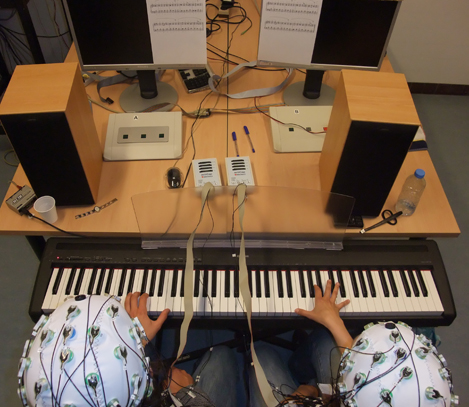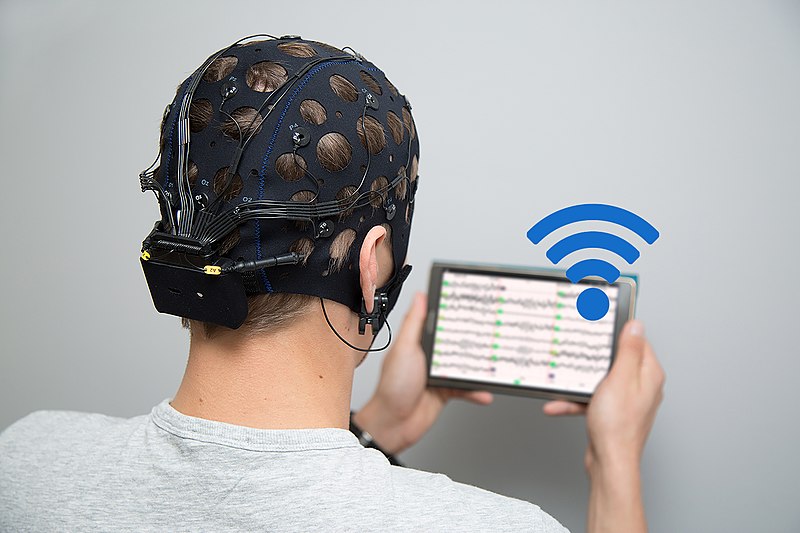
Representative Publications
Joint Agency
When you flick a light switch and a light turns on, you experience a sense of self-agency – a sense that “I turned on the light.” But what if you have to coordinate with a partner to turn on the light? Our research shows that you may experience a sense of joint agency – a feeling that “we turned on the light together.” We are currently investigating the behaviours and brain signals that cause people to experience joint agency, as well as how joint agency influences group cohesiveness, task performance, and self-agency.

Representative Publications
Shared Goals
Joint actions pose unique challenges that people acting alone do not face. One such challenge is keeping track of shared goals, or goals that can only be achieved by acting together with another person. Our research uses EEG to measure the neural signals that indicate whether or not a shared goal has been achieved. We are currently comparing neural signals in response to achieving solo versus shared goals to determine how the action monitoring system adjusts when people have to coordinate their actions with others. We are also investigating how the subjective experience of joint agency affects these neural signals.

Representative Publications
Music
Synchronizing actions with other people can have positive benefits for both individuals and groups. For example, group singing and drumming have been shown to reduce anxiety and depression and increase positive mood, even among people with little or no musical experience. We are currently using EEG to investigate the neural basis of these benefits. We are particularly interested in how coordination among multiple people’s brain activity during group performance contributes to these benefits. This research is being conducted in collaboration with Dr. Jennifer Nicol, a counseling psychologist and music therapist at the University of Saskatchewan.

Mobile EEG
One of the main tools we use in our research is electroencephalography (EEG). We are currently using mobile EEG systems to measure brain activity outside the lab. This allows us to investigate our research questions in real-world settings. For example, we are working with the Saskatoon Symphony Orchestra to record performers’ brain activity during live music performance. We are also collaborating with other researchers at the University of Saskatchewan, including Dr. José Tellez Zenteno and Dr. Megan O’Connell, to investigate whether mobile EEG systems can aid diagnosis of disorders such as epilepsy and dementia in rural and remote locations.